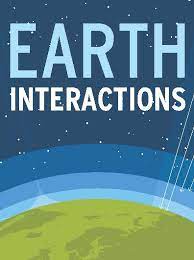A paper titled “Conflict and Climate: Drivers of Fire Activity in Syria in the Twenty-First Century”, led by GEOG Post-Doctoral Associate Dr. Maria Zubkova and Professor Dr. Louis Giglio, has been published in Earth Interactions. Here is the abstract of the paper:
It has been 10 years since the start of the Syrian uprisings. While relative stability is improving overall, a new disaster, wildfires, impacted already food-insecure population by burning through key production areas damaging crops, soil, livestock, and deteriorating air quality. Based on remotely sensed data, fire affected 4.8% of Syria in 2019, compared to the average 0.2%, and most fires were observed within agricultural land in the northeast. Abnormal amounts of rainfall during the 2019 growing season and, consequently, high soil moisture explained about 62% of the drastic increase in the burned area extent. In contrast, in 2020, fires continued despite the average amount of rainfall. Extremely high temperature could partially explain a 10-fold increase in the extent of burned area in 2020 but only within forested regions in the northwest. We argue that the abrupt changes in Syria’s fire activity were driven by the complex interaction between conflict, migration, land use, and climate. From one side, the ongoing conflict leads to a drastic increase in the number of accidental and deliberate fires and reduced capacity for fire response. On another side, years of insecurity, widespread displacement, and economic instability left no choice for locals other than exploiting fires to remove natural vegetation for expanding farming, logging, and charcoal trading. The loss of agricultural production and natural vegetation due to fire can have serious implications for food security, soil property, biodiversity, and ecosystem services, which can further exacerbate the already unstable economy and make ongoing violence even more intense.
Read the full paper here: https://doi.org/10.1175/EI-D-21-0009.1


